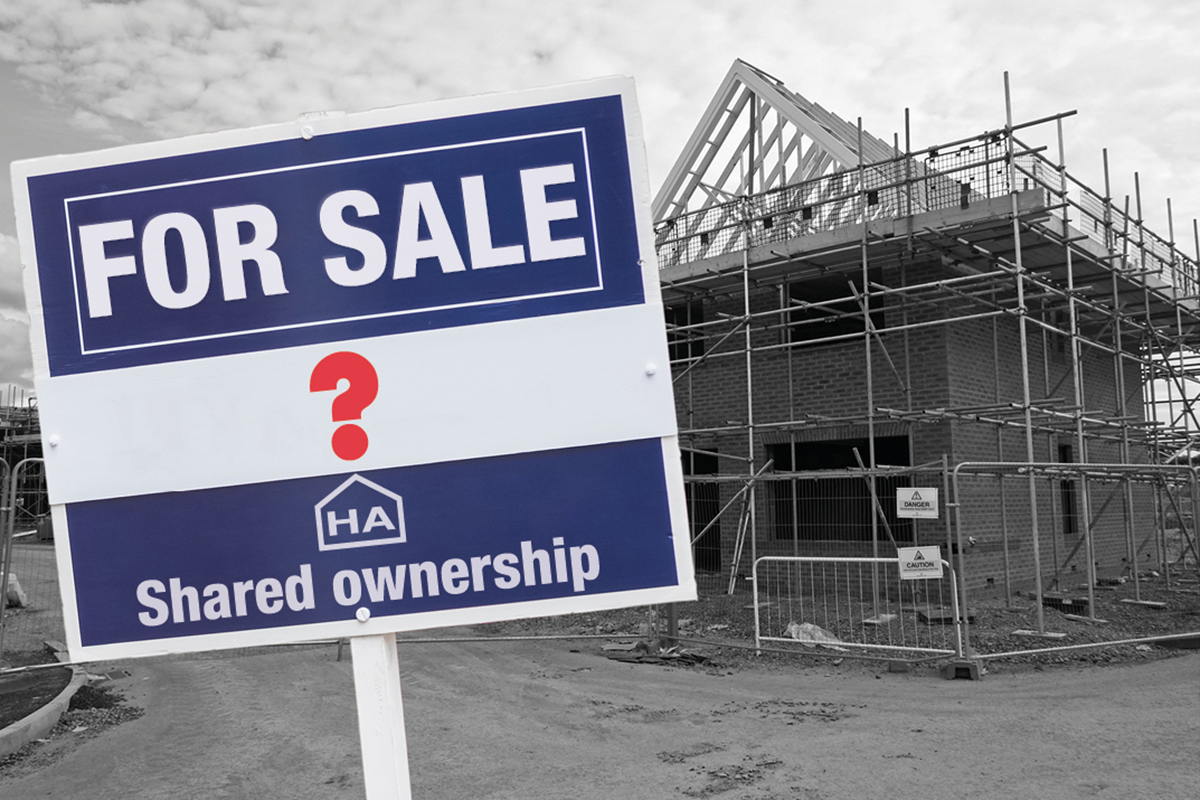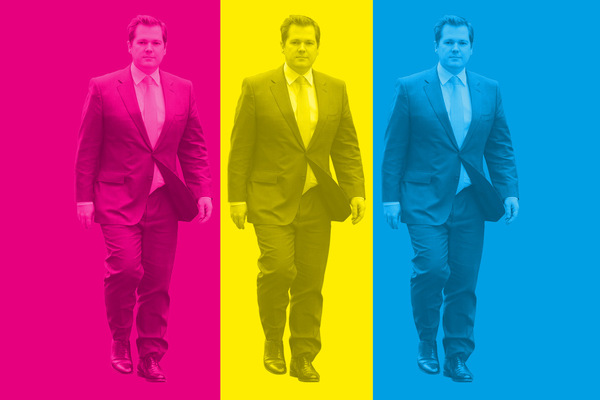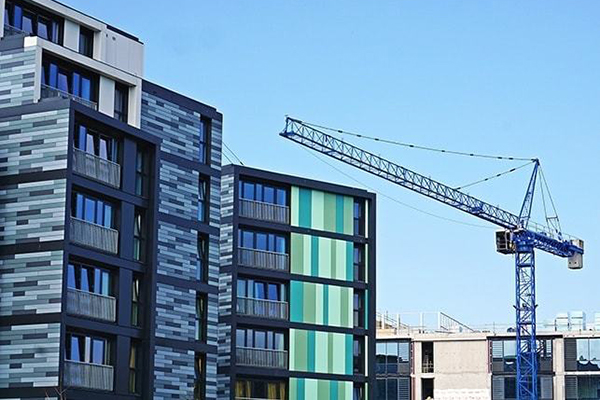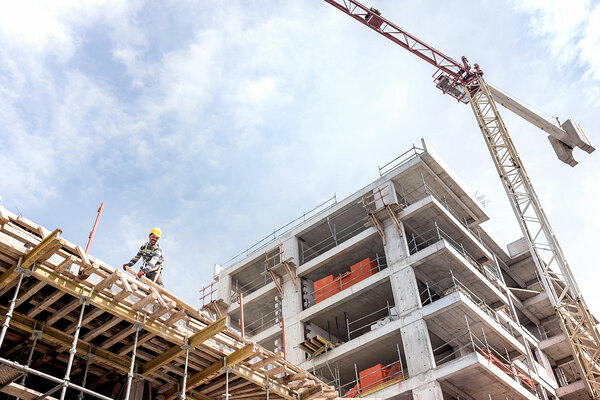You are viewing 1 of your 1 free articles
Government’s new shared ownership model: the key details revealed
The government has just launched a consultation on its new shared ownership model to be launched next spring. In the consultation, there are a number of new details to emerge on how it will actually work. Jack Simpson runs through the key points
In September 2019, housing secretary Robert Jenrick, just a couple of months into his role, announced a major shake-up of the shared ownership model. As part of the Boris Johnson-led government’s focus on homeownership, Mr Jenrick promised changes that would help “a new generation of people to own their own home”.
The changes being proposed were radical, and looked to open up shared ownership to those on lower incomes. It also allowed shared owners to buy smaller equity chunks once they had purchased part of their home. These changes were confirmed by Mr Jenrick in September this year, although many of the technical details had been omitted.
But the consultation document published today fills in some of the holes.
The government’s shared ownership shake-up plan
As part of its Affordable Homes Programme (AHP) announcement in September, the government revealed that it would be overhauling how shared ownership works, in a bid to get more people on the property ladder.
As part of this, the government revealed that every home funded through the AHP will be subject to the shared ownership Right to Buy, meaning tenants living in the homes can buy anywhere up from a 10% stake in the property.
It also included a number of other changes to the way shared ownership currently works, which will come into play when the new AHP begins in 2021. The key changes to the model are:
- Reducing the minimum share a prospective buyer can secure in the property from 25% to 10%
- Introducing a gradual staircase offer that would see leaseholders able to buy additional shares in instalments of 1% rather than 10%
- Introducing a 10-year period during which the shared owner will receive support from their landlord for essential repairs
- Shared owners will be given more control over how they can sell their home
All of these changes are tabled to be introduced in April 2021 when the AHP begins.
Despite the new model being unveiled in September, until now there has been no detailed explanation on how some of these changes will work.
Reducing the initial minimum stake to 10%
The move to allow people to buy a smaller initial stake in their property, from 25% to 10%, is aimed at opening up the tenure to those who were previously unable to raise enough funds for the initial deposit.
The government has said that all housing providers should continue to encourage people to buy the maximum share they can afford, to maximise the value for money for shared owners.
The government has also said that landlords should sell shares flexibly, up to the percentage people can afford, not just to the nearest 10%.
The consultation does raise the concern that people taking lower stakes could lead to specialist lenders providing more unsecured mortgages at much higher rates than traditional mortgages, but says it wants to do its best to protect lenders from these higher rates.
How gradual staircasing will work
Under the new model, people will be able to staircase in chunks of 1%. Currently, shared owners only have the option to staircase in chunks of 10% and need a registered Royal Chartered Institution of Surveyors (RICS) surveyor to carry out a valuation on the home every time they staircase.
To get around valuation costs, which can be expensive, a valuation will not be needed under the the new model. Instead, the price of each 1% share will be based on an estimated valuation linked to purchase price. This will be adjusted each year upwards or downwards in relation to house price inflation.
The House Price Index data will come from the latest Land Registry information and landlords will be required to provide shared owners with the updated 1% valuation every year, to give them the option to staircase. This will be at the expense of the landlord and they will also be barred from charging any other administrative fees on the gradual staircasing model.
These valuations will be valid for a maximum of three months, before the provider has to provide a new valuation. If the owner is unhappy with the valuation given, they can then opt to use a RICS registered valuation – at their own cost.
Owners will also be limited to buying a maximum of 1% each year and cannot roll over years, if they opt not to staircase one year. Those looking to buy bigger chunks will be able to do so but must do this through the current staircasing model.
The government has said that the model is geared towards cash purchases, which will avoid additional mortgage fees.
The 10-year repairs requirement for landlords
The new model will try to protect shared owners who are buying smaller chunks of equity from high service charges when they purchase their first share in a home. To do this, the new model will offer them a 10-year repair-free period on new build homes, during which the landlord will be responsible for the costs.
The 10-year period will apply only to new build homes for the first 10 years of their lives. If the home is resold in the fourth year after it was built, the new shared owner will have cover for only the next six years. This will be the same for the shared ownership Right to Buy. So if a tenant makes use of this right in the seventh year of a building’s life, they will have a three-year period protected from repair costs.
When the new model talks about repairs, it means essential repairs only, so that is for repairs to the external fabric of the building and structural repairs to walls, floors, ceilings and stairs inside the home.
The guidance also points out that this will be only for repairs that are not covered by the new build guarantee. Before shared owners can claim for the repairs costs from their landlords, they must check with their warranty provider that the work is not covered.
Shared owners will still have to pay their total service charge for the general upkeep of the building, regardless of the stake they own. They will also still have to contribute to a sinking fund for the building. Leaseholders contribute to sinking funds to pay for major repairs in the future. However, shared owners’ sinking fund payments will cover only works carried out after the building’s 10th year of existence. Structural repairs will remain the responsibility of the building owner.
Repairs in the home will still be the responsibility of shared owners but they can claim back costs from their landlords for essential repairs or replacements relating to the supply of water, gas and electricity, and sanitation.
Shared owners can claim up to £500 a year for repairs from their landlord and can roll over a maximum of one year’s costs to the next year. So, if a buyer claims only £200 one year, £300 can be rolled over to the next year. Health and safety requirements will remain the responsibility of the shared owner.
Allowing shared owners to take control of the sale of their home
If a shared owner wants to sell their home at the moment and has not staircased up to 100%, they must give the landlord at least eight weeks to try to sell the property. If they are unable to get a buyer for the property, it can then be placed on the open market.
According to the government, this can result in unnecessary delays.
Under the changes, shared owners will now have to give landlords only four weeks to sell, after which the property can be put on the open market by the seller.
Section 106 and the new shared ownership model
In addition to the government expecting all homes delivered through the AHP to be subject to the new model of shared ownership, the government is urging every shared ownership home delivered with the support of Section 106 contributions to also be subject to the new model.
This will be laid out in a ministerial statement in the future, which will say that all shared ownership homes that receive planning permission must be subject to the shared ownership model.
For those developers and housing associations that have made plans for homes under existing assumptions, the government will introduce a transitional period, so these plans are not adversely impacted.
The government has said it expects a similar arrangement to be in place for any homes built with the support of the Infrastructure Levy, which was put forward in the government’s Planning White Paper and will replace Section 106.
How the consultation will work
To get the sector’s view on these proposed changes, the government has today launched a consultation to capture views on how best to implement the new model so it can work effectively for the providers.
The responses will go to the Affordable Housing Regulation and Investment Division of the Ministry of Housing, Communities and Local Government, and it is encouraging social housing providers, investors, representative bodies and shared ownership leaseholders to respond.
The consultation will last for four weeks and closes at 11.45pm on 17 December 2020. You can find more details on the government’s consultation page here.
Sign up for our development and finance newsletter
Already have an account? Click here to manage your newsletters















